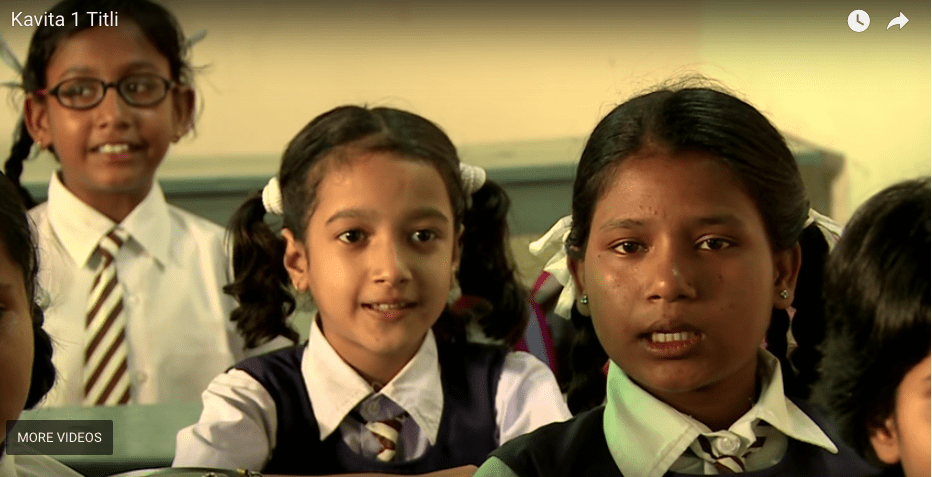Lesson plan developed for http://hindistartalk.lrc.columbia.edu/ by Rosanne Zeppieri and Rajni Bhargava; language notes by Rakesh Ranjan.
Targeted Performance Level: Novice Mid/High
Age Range of Learners: 3rd -5th graders
Number of Minutes: 40 minutes
Essential Question: Are the butterflies important to the environment? How can we bring them back?
Objectives: Students will be able to:
- I can answer simple questions about butterflies.
- I can make simple statements about the colors of butterflies.
- I can ask simple questions about what butterflies or other insect eat or do.
Language Targets: Students will learn vocabulary related to colors, flowers and food.
Colors:
|
Flowers:
|
Fruits:
|
Some action verbs: to fly – uRnaa, to drink – piinaa, to hover- maRraanaa, to come – aanaa, to go – jaanaa
Present Habitual Tense: The present Habitual construction usually indicates regular, frequent activities. The habitual aspect of the verb is formed by adding the right suffix -taa or -te or -tii to the verb stem.
- -taa (masculine, singular)
- -te (masculine, plural)
- -tii (feminine, singular and plural).
The appropriate present tense form of honaa is used the mark the tense.
Present Habitual Tense : Verb stem + taa/te/tii + auxiliary honaa (Present)
For example: LaRkaa dauRtaa hai. LaRke daurte haiN. titlii uRtii hai. titliyaN uRthii haiN.
Students will learn what insects do and what butterfly does.
Performance Assessment:
Students will play hot and cold game using two lines from the poem memorizing colors and few more phrases. Students in pairs will play the game of identifying objects and naming them. They will play charades to reinforce action verbs they learned. Students will chose another insect and say two sentences about what the insect does.
Materials:
- http://www.bharatdarshan.co.nz/magazine/articles/177/titli.html (Poetry on Butterfly) तितली रानी, तितली रानी, पास नहीं क्यों आती तितली, दूर दूर क्यों रहती हो
- https://www.youtube.com/watch?v=vx3i3tEeDlo (the life cicle of a butterfly)
- http://hindistartalk.lrc.columbia.edu/lesson/jaipur-poem-i-titali/ (Hindi Module on Titlii)
Opening Activity: Students watch a video, on butterflies https://www.youtube.com/watch?v=vx3i3tEeDlo Teacher tells them about colors and vocabulary related to objects in the garden.
Activity 2: Students memorize two lines from of a poem and chant those lines as they participate in an activity, “hot and cold”. The two lines of the poem are “तितली रानी, तितली रानी, पास नहीं क्यों आती तितली, दूर दूर क्यों रहती हो?”.
One student leave the classroom; the other students hide a butterfly (butterflies are of different colors and hidden behind objects in the classroom).
When the student returns, the class chants the two lines of the poem softer or louder depending on whether the student is moving nearer to the object or farther away. Student will say the full sentence when he/she finds the object.
The class plays 3 to 4 rounds of this activity.
Activity 3: Teacher takes out from a box paper cutouts of butterflies, a tree, flowers and insects. Teacher asks questions about the colors of the items: the tree is green, butterfly is blue, flower is red, if not which color is it?
Students in pairs get different pictures and one partner holds and shows the picture and the other partner has to finish the sentence stating the color of the picture and the object such as “The tree is green”, “Butterfly is blue” etc.. They do it within the specified time limit. Whoever finishes first wins.
Activity 4: Students recite the poem about the butterfly (Poem I: Titli ) following the example of the video. In the process, the teacher focuses on key vocabulary related to the butterfly ( butterfly flies, hovers on flowers, drinks nectar and goes to another flower). The teacher leads a Total Physical Response activity to ensure that students have internalized the targeted action words.
Activity 5: Students play charades in pairs. One student is given a card with an action word in a sentence from the poem. The other student has to guess the word or sentence.
Activity 6: Students in pairs will pick one insect that the teacher has previously selected. Students will draw the insect and write two sentences the color is the insect and one sentence with the action verb. They share it with the class.